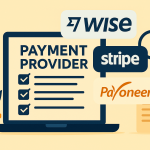Understanding the Basics of International Contractor Payments
Hiring international contractors offers access to a global talent pool, but it also comes with compliance, currency, and tax challenges. Understanding the payment process is essential for smooth operations and legal compliance.
Step 1: Determine the Contractor’s Location and Legal Status
The contractor’s country affects your reporting requirements and available payment methods. Make sure to verify their residency and whether they qualify as a contractor under local laws.
Step 2: Choose the Right Payment Platform
Select a platform that supports global payouts, offers competitive fees, and complies with financial regulations. Top options in 2025 include Wise, Payoneer, Deel, and Remote.
Step 3: Collect Necessary Documentation
Gather required documents such as a signed contract, tax identification forms (e.g., W-8BEN), and a valid invoice. These documents help avoid tax issues and maintain clean records.
Step 4: Process the Payment
Use your selected platform to initiate payment. Confirm exchange rates, fees, and transfer timelines. Most services provide tracking to both parties.
Step 5: Maintain Records and Compliance
Retain records of payments, agreements, and correspondence for legal and tax purposes. Use cloud-based systems or accounting software for organization and audits.
Best Practices for Paying International Contractors
- Use secure, reputable payment processors
- Ensure clarity in contracts on payment terms
- Account for local laws and currency risks
- Automate recurring payments where applicable
Conclusion
Paying international contractors is easier than ever in 2025 with modern platforms and digital documentation. By following these steps, your business can confidently work with global talent and avoid costly mistakes.





